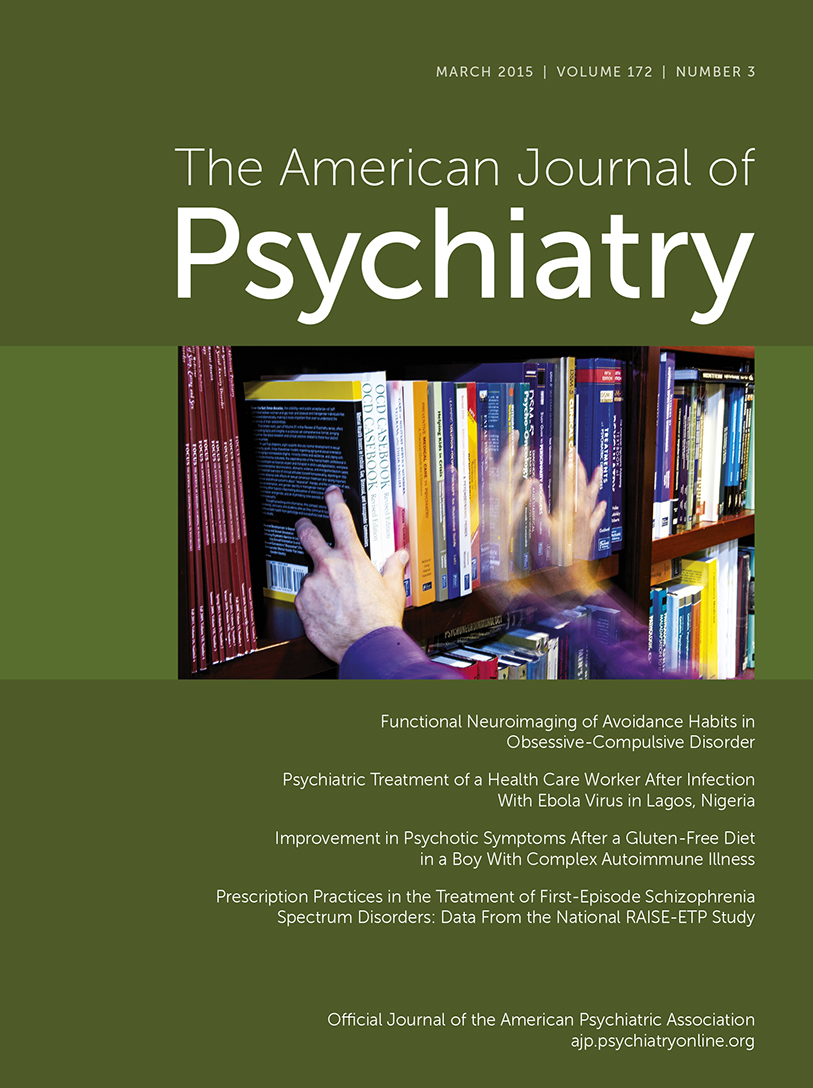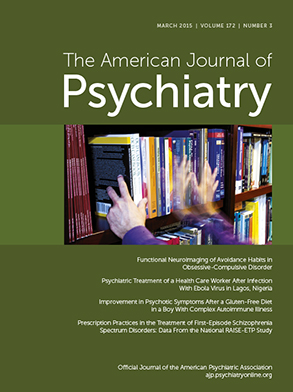Abnormally high response of the amygdala to negative affective challenge has been observed reliably in major depressive disorder (
1,
2), but little is known about the trajectory of this abnormality over the broad longitudinal arc of depression, particularly as premorbid risk factors emerge and potentially compound during critical periods of emotional development. Is higher amygdala responsivity present in children at risk for major depression, before the first onset of depression? Do children at high risk for depression show typical patterns of attenuation of amygdala response over the course of development (
3)? How might distinct risk factors and their co-occurrence affect this developmental trajectory? In this issue, Swartz and colleagues (
4) address these questions in the context of a study examining developmental changes in amygdala reactivity in groups of adolescents at high and low familial risk for major depression.
The authors measured amygdala reactivity at initial assessment and again at 2-year follow-up in never-depressed adolescents at high risk for developing major depression—by virtue of having both a first- and a second-degree relative with a history of depression (
5)—and in low-risk adolescents with no first- or second-degree familial history of major depression. The investigators used functional MRI (fMRI) to estimate amygdala reactivity with an emotion-face comparison task that has been successful in eliciting amygdala response in individual scanning participants (
6). For each trial of this task, participants viewed three faces and selected, from two faces presented at the bottom of the display, the one that had the same emotional facial expression as the target face at the top; for a given trial, all faces showed either fear or anger. In addition to measuring amygdala reactivity, the authors assessed the number and severity of stressful life events encountered by participants in the year preceding each scan (
7). Notably, this study incorporated large samples relative to typical functional neuroimaging investigations, with 157 participants (85 high risk and 72 low risk) completing both stages of data collection with viable neuroimaging data. This large sample size allowed the investigators to obtain reliable estimates of developmental changes in amygdala response associated with the interactions of two factors: familial risk status (low or high) and the occurrence of stressful life events (low or high).
Consistent with previous data (
3), Swartz et al. found decreasing amygdala response from initial assessment to 2-year follow-up in adolescents who had a low familial risk for depression and comparatively fewer stressful life events. Having an increased familial risk
or having experienced a relatively greater number of stressful life events, however, was associated with (roughly equivalent) developmental increases in amygdala response to emotional challenge. Finally, having both an increased familial risk for depression and experiencing a greater number of stressful events was associated with an even sharper increase in amygdala response from initial assessment to 2-year follow-up. These findings remained when participants with an anxiety disorder were excluded from the analysis.
The pattern of amygdala reactivity findings presented in this report was present only for fearful and not for angry facial expressions. This is not surprising, given that comparisons of response to fearful versus angry facial expressions have shown fearful expressions to be better elicitors of amygdala reactivity (
8). Furthermore, the localization of emotion-face reactivity to limbic and paralimbic regions as well as the differential effects observed for fearful and angry expressions suggests that the pattern of data reported did not result from stimulus-correlated motion.
This study is emblematic of a maturing clinical neuroscience of depression and reflects the growing realization that the pathophysiology of major depression manifests itself more over the course of decades than months. Moreover, this work assumes the lesson learned from the failings of first-generation neuroimaging studies of the risk for major depression that the most informative and ultimately useful investigations will be conceived with an appreciation of the many trajectories toward depressive illness. Indeed, as accumulation continues in these and other large data sets (
9,
10)—which are necessary for approaching inquiries of the risk for major depression with the requisite complexity in mind—we are likely to achieve even more meaningful theoretical and clinical advances. In addition to the sensitivity conferred by the use of large samples to detect multivariate effects, the authors’ experimental design had other notable strengths. For example, using both first- and second-degree family histories in defining high- and low-risk groups increased the likelihood of capturing familial risk. Furthermore, among the myriad possible affective challenge paradigms from which to choose, this group’s development and use of a reliable fMRI-appropriate paradigm for limbic system provocation could account in part for the high quality of the findings. Finally, conducting the longitudinal assessment over a critical developmental period in adolescence optimized the sensitivity of the design to detect differential developmental effects.
As more complex, multifactor clinical neuroimaging designs come to fruition, the gap will increasingly narrow between the laboratory and the clinic. Indeed, only two questions separate the approach in the Swartz et al. study from applicability. The first has to do with the predictive significance of developmental changes in amygdala reactivity for development of major depression. The second pertains to whether this neural measure outperforms behavioral and questionnaire measures in terms of predictive sensitivity. Predicting symptom change using amygdala reactivity in already depressed adults has yielded counterintuitive results, with amygdala activation predicting improvement of depressive symptoms (
11,
12). The story may be very different, however, in a premorbid population and in the context of employing developmental trajectories (
13) as opposed to single assessments as predictors. Given the large samples Swartz et al. are using in their ongoing research, and given that 10% of the original high-risk cohort in this study developed depression in the 2 years between initial assessment and follow-up, findings addressing the question of the predictive utility of developmental changes in amygdala reactivity and their sensitivity relative to behavioral measures may soon emerge from this research group.

